Introduction
In the realm of culinary innovation, few dishes embody the marriage of frugality, creativity, and sustainability as elegantly as stir-fried tofu dregs. Often overlooked as mere kitchen waste, this humble ingredient—a byproduct of tofu production—has quietly nourished generations across Asia, particularly in China, Japan, and Southeast Asia. Once considered a peasant food born from necessity, tofu dregs (okara in Japanese, doufuzha in Chinese) have recently emerged as a symbol of eco-conscious gastronomy, celebrated by chefs and home cooks alike for their nutritional richness and minimal environmental footprint. This article delves into the history, cultural significance, and modern revival of stir-fried tofu dregs, exploring how this unassuming dish bridges tradition and sustainability in an era of growing food insecurity and climate awareness.
I. From Waste to Wonder: The Humble Origins of Tofu Dregs
Tofu, a staple of Asian diets for over two millennia, is crafted by curdling soy milk and pressing the curds into blocks. The process leaves behind a fibrous, pulpy residue known as tofu dregs—a creamy, beige-colored mass composed of soy protein, fiber, and residual moisture. Historically, tofu makers viewed this byproduct as a nuisance; its high water content made it perishable, and its grainy texture rendered it unappealing to many. Yet, in an age before industrial food systems, thrifty households refused to let such a nutrient-dense resource go to waste.
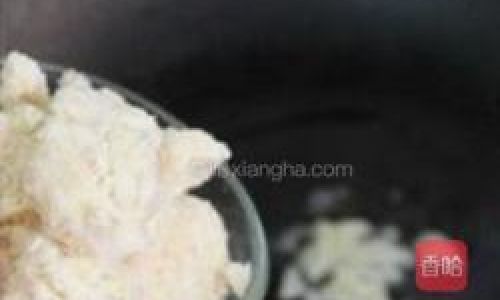
In rural China, peasants developed ingenious ways to repurpose tofu dregs. They would drain excess liquid by wrapping the pulp in cloth, then fry it with aromatic vegetables, garlic, and chili peppers to create a savory, protein-rich dish. Similarly, in Japan, okara became a key ingredient in unohana, a simmered dish featuring vegetables and soy sauce, while Korean cooks incorporated it into biji-jjigae, a hearty stew. These preparations were not merely acts of culinary alchemy but survival strategies, ensuring that no edible part of the soybean was wasted.
II. The Culinary Alchemy of Stir-Frying
Stir-frying, a cornerstone of Asian cooking, transforms tofu dregs from a soggy byproduct into a crispy, flavorful delight. The technique hinges on high heat, rapid cooking, and precise seasoning—elements that coax out the ingredient’s latent potential. To prepare stir-fried tofu dregs, cooks typically follow these steps:
- Draining and Pressing: Fresh tofu dregs are placed in a cheesecloth or fine mesh strainer to remove excess moisture. Some recipes call for mixing the dregs with a pinch of salt to accelerate dehydration.
- Seasoning: The dregs are combined with minced garlic, ginger, scallions, and a medley of vegetables such as carrots, bell peppers, or mushrooms. For umami depth, soy sauce, oyster sauce, or a dash of fermented black beans may be added.
- Stir-Frying: A wok is heated until smoking hot, then coated with a minimal amount of oil (sesame or peanut oil are preferred for their high smoke points). The seasoned dregs are spread evenly across the wok’s surface, allowing them to sear and caramelize. Constant stirring prevents burning while ensuring even cooking.
- Finishing Touches: Just before serving, a sprinkle of toasted sesame seeds, chopped cilantro, or a drizzle of chili oil elevates the dish’s complexity.
The result is a texture-rich tapestry: crispy edges contrast with tender interiors, while the dregs’ mild, earthy flavor absorbs the vibrancy of the seasonings.
III. Nutritional Powerhouse in a Pan
Beyond its culinary versatility, stir-fried tofu dregs boast impressive health credentials. A 100-gram serving provides:
- 11 grams of protein: Comparable to lean meats like chicken breast, making it an excellent plant-based alternative.
- 5 grams of dietary fiber: Aiding digestion and promoting satiety.
- Rich in isoflavones: Compounds linked to reduced risk of heart disease and certain cancers.
- Low in fat and calories: A boon for weight-conscious diets.
Moreover, tofu dregs retain more of the soybean’s original nutrients than processed tofu itself, as they are less subjected to heat and mechanical processing. This nutritional density has led nutritionists to hail it as a “superfood scrap,” particularly in an era where global food systems waste nearly 1.3 billion tons of edible material annually.
IV. Sustainability: The Dish That Fights Food Waste
The modern food industry’s linear “take-make-waste” model has devastated ecosystems, with food waste contributing 8-10% of global greenhouse gas emissions. Tofu dregs offer a compelling antidote: by valorizing a byproduct, they exemplify circular economy principles. Consider these facts:
- Resource Efficiency: Producing tofu dregs requires no additional land, water, or energy, as they are generated during tofu production.
- Waste Reduction: For every kilogram of tofu made, 0.5-1 kilogram of dregs are produced. Without reuse, this biomass would decompose in landfills, emitting methane—a greenhouse gas 80 times more potent than CO2.
- Economic Empowerment: Small-scale tofu makers in Asia often struggle with disposal costs. Selling dregs to restaurants or households creates supplementary income streams.
Chefs and food activists are now championing tofu dregs as part of the “root-to-stem” movement, which advocates using every part of an ingredient. In Singapore, for example, Michelin-starred restaurant Labyrinth serves a signature okara fritter paired with truffle aioli, while Berlin’s Kopps vegan restaurant features it in a innovative “scrambled eggs” dish.
V. Global Adaptations: From Street Food to Fine Dining
Stir-fried tofu dregs are no longer confined to home kitchens. Around the world, chefs are reimagining this humble ingredient for contemporary palates:
- Asia: In Taiwan, night markets offer doufuzha pancakes stuffed with pickled vegetables and coriander. Japanese convenience stores sell okara energy bars, while Thai vendors incorporate it into larb salad, substituting ground meat with seasoned dregs.
- Europe: Scandinavian bakeries use okara in gluten-free breads, exploiting its binding properties. London’s vegan pop-up Club Mexicana serves okara “fish” tacos, mimicking the texture of battered cod.
- North America: Food trucks in Los Angeles dish out okara burgers topped with kimchi slaw, while Canadian researchers explore using dregs as a sustainable meat substitute in plant-based sausages.
This global migration reflects a broader shift toward “upcycled” foods—products made from ingredients that would otherwise be discarded. The market for upcycled foods is projected to reach $70 billion by 2030, driven by eco-conscious millennials and Gen Z consumers.
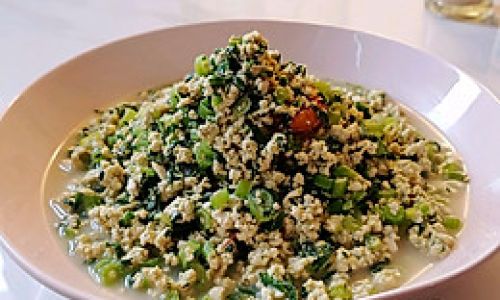
VI. Overcoming Stigma: The “Ugly Food” Movement
Despite its merits, tofu dregs face cultural barriers. In many Western societies, the term “byproduct” conjures images of scraps fit only for livestock. The “ugly food” movement, which celebrates imperfect produce, offers a blueprint for rebranding. By emphasizing dregs’ nutritional and environmental benefits, advocates can shift perceptions. For instance, the nonprofit ReFED estimates that if 25% of U.S. food waste were upcycled, it would reduce emissions equivalent to taking 2 million cars off the road.
VII. A Step-by-Step Guide to Perfect Stir-Fried Tofu Dregs
For those eager to experiment, here’s a fail-safe recipe:
Ingredients (Serves 4):
- 2 cups fresh tofu dregs (or frozen, thawed)
- 1 tbsp neutral oil (vegetable or coconut)
- 3 garlic cloves, minced
- 1-inch ginger, grated
- 1 small onion, thinly sliced
- 1 carrot, julienned
- 1 red bell pepper, julienned
- 1 cup shredded cabbage
- 2 tbsp soy sauce (or tamari for gluten-free)
- 1 tsp chili flakes (optional)
- 1 tbsp sesame oil
- Salt and pepper to taste
- Garnish: chopped scallions, toasted sesame seeds
Instructions:
- Prep the Dregs: If using frozen dregs, squeeze out excess moisture with a clean towel.
- Stir-Fry Aromatics: Heat oil in a wok over high heat. Add garlic, ginger, and onion; stir-fry until fragrant (30 seconds).
- Add Vegetables: Toss in carrot and bell pepper; stir-fry for 2 minutes until slightly softened.
- Cook the Dregs: Add dregs, spreading them evenly. Let sear undisturbed for 1-2 minutes to crisp.
- Season: Drizzle soy sauce and chili flakes; stir vigorously to coat.
- Finish: Fold in cabbage and cook until wilted (1 minute). Remove from heat; stir in sesame oil.
- Serve: Plate with a garnish of scallions and sesame seeds. Pair with steamed rice or noodles.
VIII. The Future of Tofu Dregs: Innovation and Accessibility
As demand for sustainable protein grows, tofu dregs are poised for mainstream adoption. Startups like Renewal Mill in California are dehydrating and milling okara into gluten-free flour, while Planetarians in Israel use it to create vegan chicken nuggets. Food tech companies are also exploring fermentation techniques to enhance dregs’ shelf life and flavor profiles.
However, challenges persist. Scaling production requires overcoming logistical hurdles, as tofu dregs spoil quickly without refrigeration. Educating consumers about its culinary potential remains critical, as does advocating for policy incentives to support upcycled food industries.
Conclusion: A Taste of Sustainability
Stir-fried tofu dregs represent more than a dish—they are a philosophy. By transforming waste into wonder, they embody the principles of mindfulness, creativity, and stewardship that humanity urgently needs. As climate change disrupts food systems and inequality persists, the act of savoring a plate of okara stir-fry becomes a quiet rebellion against waste, a celebration of heritage, and a step toward a kinder, more sustainable world. Whether enjoyed in a bustling Chinese night market or a trendy Brooklyn café, this ancient dish reminds us that the future of food lies not in reinvention, but in reimagining what we already have.
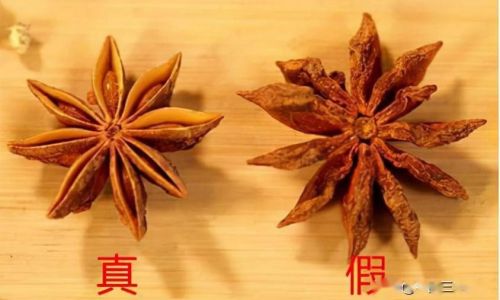
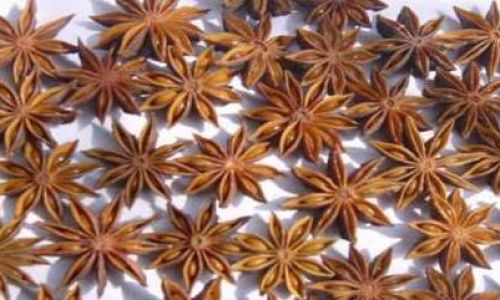
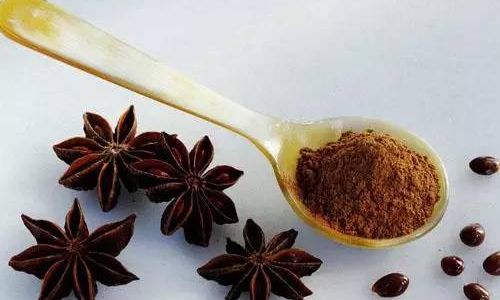
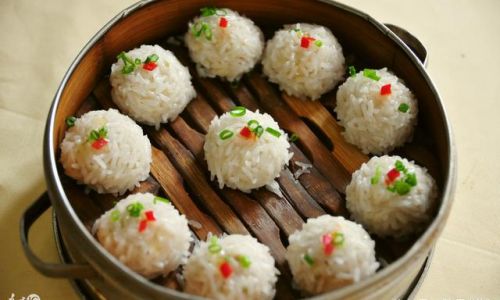
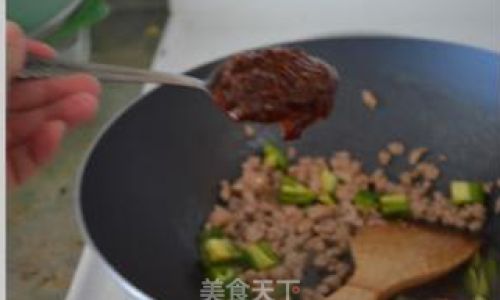
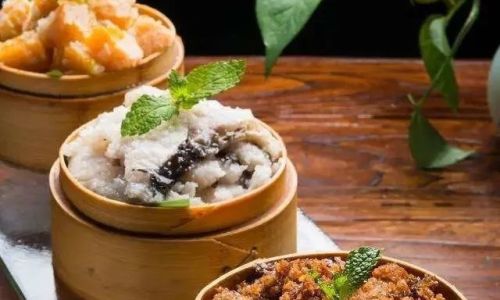
0 comments